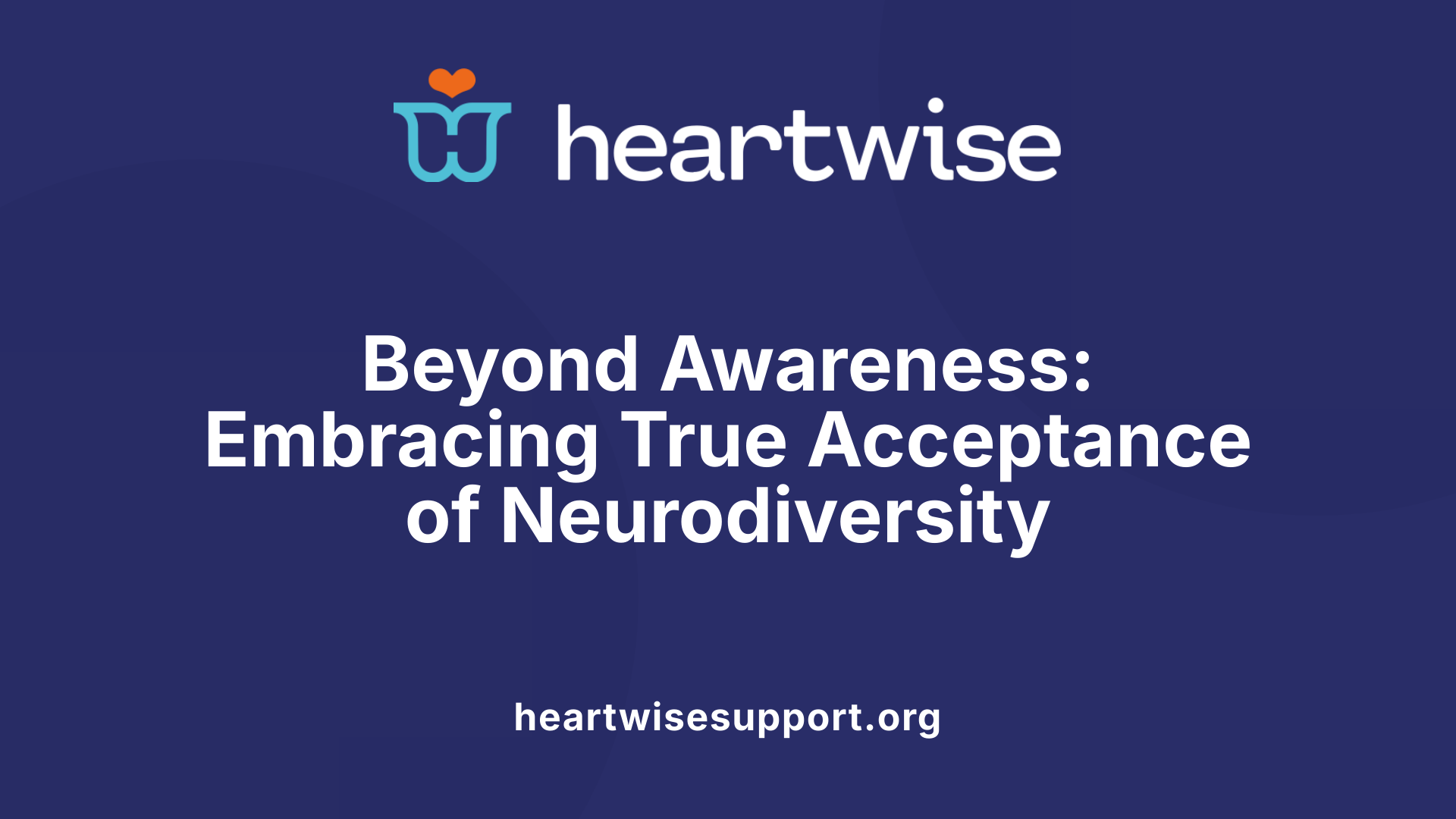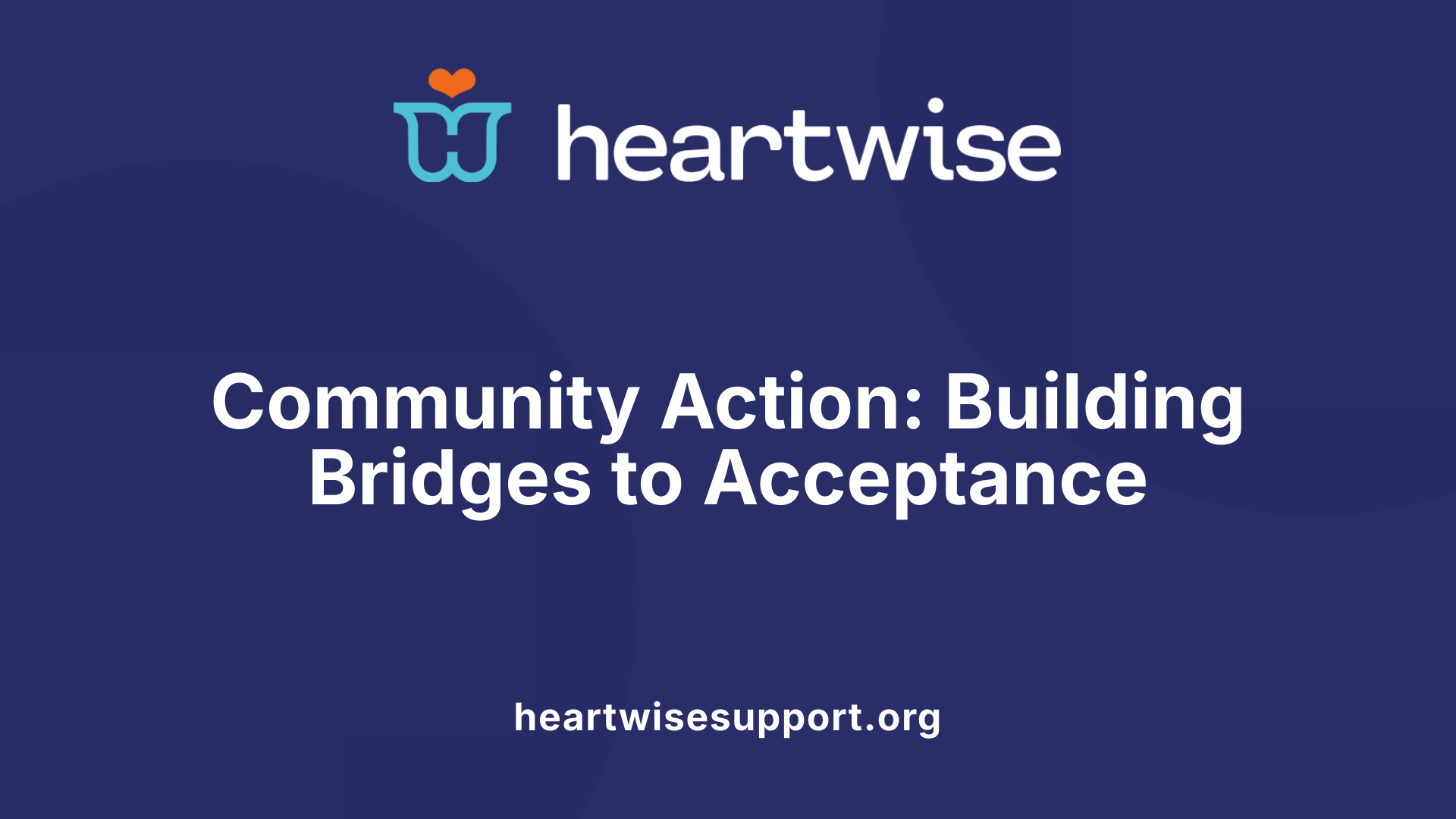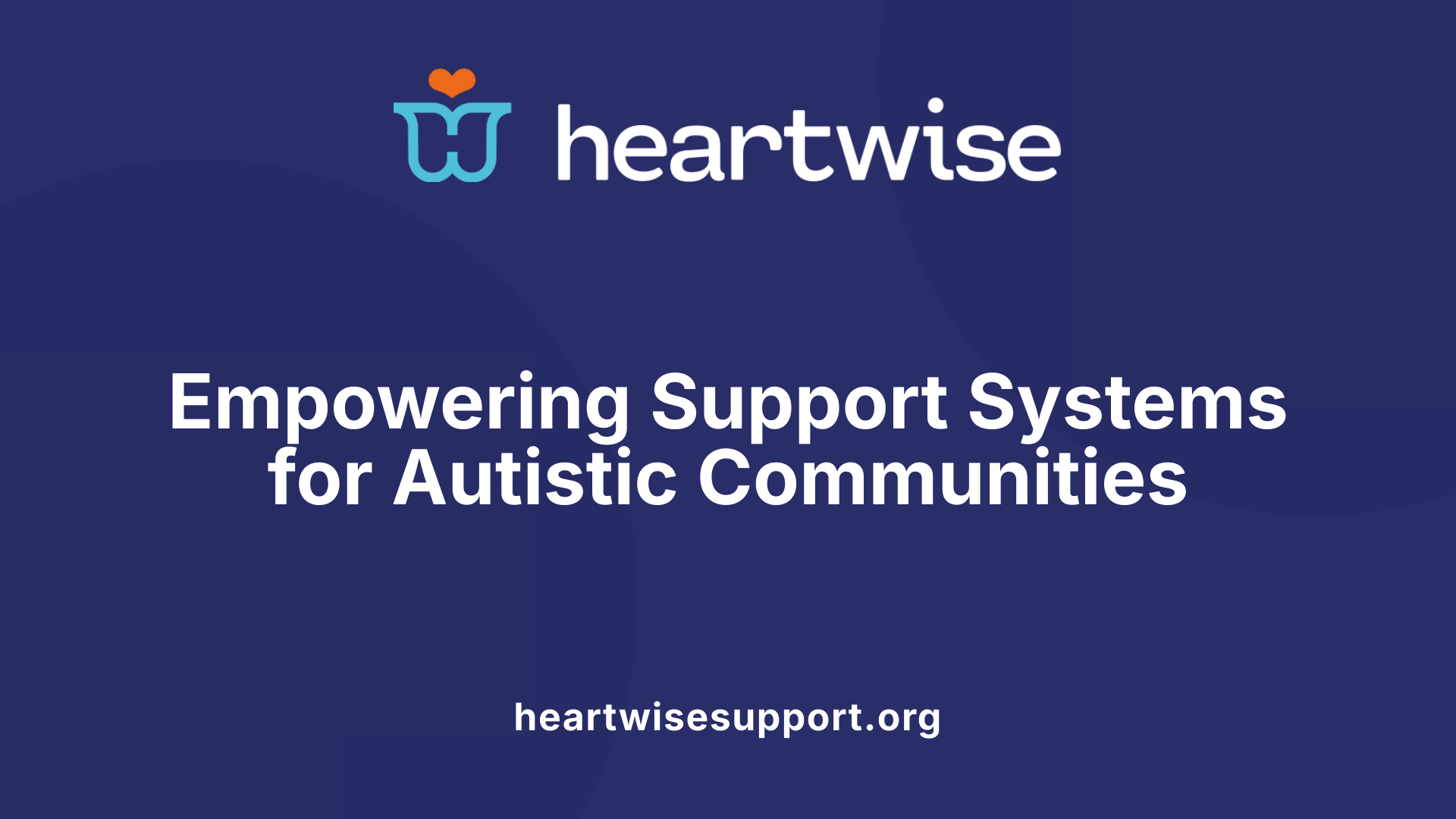Understanding the Shift from Awareness to Acceptance
In recent years, the autism community and advocacy groups have been increasingly focused on moving beyond mere awareness to fostering genuine acceptance of neurodiversity. This transition aims to create more inclusive environments and effective support systems for autistic individuals, pushing society towards a more embracing and understanding stance. Key organizations, such as the Autism Society of America, have spearheaded efforts to educate, advocate, and celebrate differences as a vital part of societal fabric.
Reconceptualizing Autism Awareness and Its Limitations

Why is it important to spread awareness about autism?
Raising awareness about autism is fundamental to creating a society that understands and respects neurodiversity. It helps eliminate misconceptions and stereotypes that can lead to stigma and discrimination. Increased awareness encourages early diagnosis and intervention, which are vital for improving developmental outcomes and supporting children’s growth. It also facilitates the development of inclusive environments in education, workplaces, and communities by making them more accessible and accommodating to diverse needs.
Awareness efforts serve as a foundation for advocacy, pushing for policy changes that expand access to vital resources such as mental health support, healthcare, and legal protections. By spreading accurate information, awareness campaigns foster empathy and compassion, enabling society to celebrate the strengths of autistic individuals and support their full participation in all aspects of life. Ultimately, awareness acts as the first step towards a more inclusive society that values authentic human diversity.
What is the difference between autism awareness and acceptance, and why is it important to progress from awareness to acceptance?
Understanding the difference between autism awareness and acceptance is crucial for societal progress. Awareness primarily involves recognizing the existence of autism and sharing basic facts. It aims to inform the public about what autism is, often through campaigns, educational programs, and media representation. However, awareness alone can sometimes lead to superficial knowledge or reinforce stereotypes if not accompanied by a deeper understanding.
Acceptance goes beyond mere recognition. It involves embracing autistic individuals as valuable members of society—individuals with unique strengths, perspectives, and experiences. Acceptance encourages active inclusion, mutual respect, and understanding. It fosters environments where autistic people feel valued and supported, reducing stigma and encouraging societal change.
Progressing from awareness to acceptance is essential because true acceptance translates knowledge into support. It inspires behaviors that accommodate sensory sensitivities, communication differences, and diverse expressions of neurodiversity. Acceptance also helps in dismantling prejudiced attitudes and biases, making spaces where autistic people can thrive both socially and professionally.
This transition enhances the quality of life for autistic individuals by creating more opportunities for participation, companionship, and achievement. It moves society closer to recognizing that neurodiversity enriches communities, and that embracing such diversity is a measure of societal maturity and kindness.
How does this shift influence societal perceptions and support?
This shift from awareness to acceptance significantly impacts how society perceives and supports autistic individuals. When society moves beyond mere awareness, perceptions become more nuanced and respectful. Media portrayals and community narratives begin to focus on strengths, talents, and authentic experiences rather than deficits or stereotypes.
For example, community groups actively work to educate neighbors, schools, and employers about autism, shifting societal attitudes from viewing autism as a problem to be fixed to recognizing it as a natural human variation. This change fosters inclusive programs, workplace accommodations, and social opportunities that enable autistic people to participate fully.
Acceptance also influences policies and practices. Policymakers inspired by an acceptance mindset are more likely to fund support programs, enforce anti-discrimination laws, and prioritize health equity. Such societal backing creates safer, more welcoming environments where neurodiverse individuals are understood and valued.
Furthermore, acceptance reduces harmful perceptions such as criminalization or marginalization. With increased acceptance, communities develop empathy-driven responses, like improved first responder training and safe interactions with law enforcement, which are crucial for preventing harm.
Overall, as society shifts from simply recognizing autism to genuinely accepting and celebrating it, support systems become more responsive and effective. This transformation enables autistic individuals to live more autonomous, connected, and fulfilled lives, which benefits the entire community.
| Aspect | Awareness Approach | Acceptance Approach | Impact on Society |
|---|---|---|---|
| Definition | Recognizing autism exists | Valuing autistic individuals | More respectful perception |
| Goals | Share facts and information | Promote inclusion and understanding | Reduced stigma |
| Methods | Campaigns and media | Community engagement, workshops | Supportive policies, environmental adaptations |
| Outcomes | Basic knowledge | Active support and integration | Enhanced quality of life for autistic individuals |
| Challenges | Superficial understanding | Deep cultural change | Cultural shift towards neurodiversity |
This ongoing transition underscores the importance of shifting societal focus from merely spreading awareness to cultivating a culture of acceptance. Such a paradigm shift requires collective effort from communities, policymakers, families, and individuals—each playing a part in promoting understanding, respect, and inclusion for all neurodiverse people.
Community's Role in Shaping Perceptions and Fostering Acceptance

How can community-driven efforts and societal perceptions influence autism acceptance?
Community-driven initiatives are central to transforming how society views and supports autistic individuals. These efforts include peer mentorship programs, inclusive media campaigns, and active engagement on social media platforms. Such programs work to empower autistic individuals by providing opportunities for shared experiences, mutual support, and a sense of belonging.
One of the most influential community efforts is the creation and promotion of media content that accurately and respectfully portrays autism. When television shows, movies, and online stories showcase the diverse strengths and lived experiences of autistic people, they challenge stereotypes and dispel misconceptions. For example, portrayals in shows like Atypical and The Good Doctor, alongside films like Please Stand By, have contributed to broader understanding.
Supportive social media communities offer spaces where autistic individuals and allies share resources, success stories, and advocacy efforts. These digital spaces foster empathy and help normalize neurodiversity, making acceptance more tangible in everyday life.
Changing societal perceptions is just as crucial. It relies heavily on advocacy and representation. Community organizations work to influence public attitudes by promoting respectful language and advocating for inclusive policies in schools and workplaces. The visibility of autistic voices in the media and public forums helps shift societal attitudes from fear and misunderstanding toward respect and acceptance.
Media influence is especially impactful. When the public consistently encounters accurate portrayals and stories emphasizing strengths rather than deficits, it reduces stigma and fosters a culture of appreciation for neurodiversity. Advocacy groups also partner with policymakers to enact inclusive legislation, such as workplace accommodations and accessible public spaces, reinforcing societal acceptance.
Community support also influences how institutions and society as a whole perceive autism. When community members actively listen to autistic voices and include them in decision-making processes, perceptions evolve into genuine acceptance. Including autistic adults in advocacy and educational initiatives ensures that community efforts reflect authentic experiences and needs.
How do community efforts influence societal attitudes?
Collective community actions lead to broader societal change by:
- Promoting inclusive media and storytelling
- Supporting educational and workplace accommodations
- Amplifying autistic voices in public discourse
- Advocating for policy change
This collective push helps to normalize autism as a natural part of human diversity, shifting the societal response from trying to fix or cure autism toward acceptance and support.
In conclusion, community-driven efforts and societal perceptions are deeply interconnected. Through inclusive media, peer programs, advocacy, and representation, they foster an environment where autistic individuals are respected, supported, and fully included.
| Effort Type | Impact | Examples |
|---|---|---|
| Peer programs | Foster belonging and shared learning | Peer mentoring, support groups |
| Inclusive media | Change perceptions and challenge stereotypes | Films, TV shows, social media campaigns |
| Advocacy & Representation | Influence policies and societal attitudes | Policy initiatives, autistic voices in media |
| Community Support | Build empathy and understanding | Community events, workshops, sensory-friendly activities |
This coordinated approach creates a more accepting society, supporting autistic individuals to live fully and participate actively in all aspects of life.
Strategies and Initiatives Promoting Inclusive Understanding

What strategies and initiatives effectively improve understanding and inclusion of autistic individuals through awareness efforts?
Efforts to promote greater understanding and acceptance of autistic individuals encompass various approaches that aim to shift societal perceptions and create more inclusive environments. One of the most prominent strategies is implementing comprehensive public education campaigns. For example, Autism Awareness Month, now officially known as Autism Acceptance Month, is dedicated to disseminating accurate information about autism, debunking myths, and emphasizing the strengths and diversity within the autistic community.
Storytelling plays a vital role in these initiatives. Personal stories and lived experiences shared by autistic individuals and their families cultivate empathy and foster deeper understanding. Media portrayals, such as characters in popular TV shows like 'Atypical' and 'The Good Doctor,' or movies like 'Please Stand By,' are instrumental in reflecting authentic autistic experiences. These portrayals help challenge stereotypes and showcase the strengths and unique perspectives of autistic individuals, promoting a more nuanced view beyond disability.
Creating autism-friendly environments is another cornerstone of meaningful inclusion. This involves adapting physical and social spaces to accommodate sensory sensitivities through sensory-friendly activities, visual supports, and flexible environments in schools, workplaces, and public areas. For instance, workplaces adopting inclusive policies and sensory accommodations enable autistic employees to participate fully and succeed professionally.
Advocacy and policy change form a critical element of sustainable inclusion. Organizations championing autism rights work tirelessly to influence legislation that improves access to healthcare, education, employment, and justice. Initiatives such as expanding healthcare access, providing specialized training for first responders, and advocating for employment opportunities help address systemic barriers.
Additionally, professional development programs for teachers, healthcare providers, and law enforcement personnel enhance their capacity to support autistic individuals effectively. These training initiatives teach understanding of sensory, communication, and behavioral needs, ensuring that support is respectful and appropriate.
Community engagement efforts, such as public events, workshops, and campaigns, serve to challenge societal stigma, promote acceptance, and celebrate neurodiversity. Schools collaborating with community groups often host inclusive events and involve autistic voices in decision-making processes to foster understanding among students and staff.
In sum, combining public education, media engagement, environmental adaptations, advocacy, and professional training creates a comprehensive approach. These strategies work collectively to reduce misconceptions, foster acceptance, and build inclusive communities where autistic individuals can thrive, participate actively, and be valued for their unique contributions.
The Power of Education, Storytelling, and Social Attitudes

Why are education, storytelling, and societal attitudes significant in promoting autism acceptance?
Education, storytelling, and societal attitudes are fundamental drivers in transforming how we understand and support individuals with autism. These tools serve to increase awareness, combat stereotypes, and foster empathy toward autistic people.
Educational initiatives—such as school programs, peer-education modules, and training for teachers—help improve knowledge about autism in both children and adults. When students are taught to appreciate neurodiversity from an early age, it reduces stigma and encourages inclusive behaviors. These programs focus on dispelling misconceptions, emphasizing autistic strengths, and teaching respect for different communication styles and sensory needs.
Storytelling plays a crucial role by sharing personal experiences of autistic individuals and their families. Authentic narratives found in media, literature, and community campaigns humanize autism, moving beyond clinical definitions to showcase diverse identities and achievements. When autistic voices are included in media portrayals—whether through TV shows, movies, or public campaigns—it challenges harmful stereotypes and promotes a more comprehensive understanding.
Representations that reflect real lived experiences—like those in shows such as ‘Atypical’ or initiatives like Sesame Workshop’s ‘See Amazing in All Children’—help society see autistic individuals as whole persons with unique talents and challenges. This visibility fosters empathy and encourages society to view autism through a lens of acceptance rather than fear or misunderstanding.
Public attitudes are deeply influenced by societal perceptions, which are shaped through education and media. Positive societal attitudes are essential for creating environments where autistic individuals feel valued and included. When society adopts inclusive norms and policies—such as accessible public spaces and workplace accommodations—it signals collective support for acceptance.
Furthermore, changing societal attitudes involves addressing cultural stigmas and misconceptions. For example, campaigns that challenge harmful perceptions of autism as solely a disorder to be fixed help shift focus toward acceptance of neurodiversity. This mental shift is vital for improving access to healthcare, employment, and social participation.
In summary, education, storytelling, and societal attitudes are interconnected elements that elevate understanding and foster true acceptance. By ensuring that accurate information and authentic stories reach diverse audiences, society becomes more inclusive and supportive of autistic individuals.
| Aspect | Impact | Examples |
|---|---|---|
| Education | Improves knowledge, reduces stigma | School programs, peer training |
| Storytelling | Alters perceptions, humanizes autism | Personal narratives, media portrayals |
| Societal Attitudes | Shapes inclusive environments | Public campaigns, policy changes |
Engaging communities through these avenues creates a society that not only recognizes autism but genuinely celebrates neurodiversity. This holistic approach results in environments where autistic individuals can thrive, participate, and be valued for their unique contributions.
Supporting Autistic Individuals and Their Families: Community Resources and Engagement

How can community-driven efforts and societal perceptions influence autism acceptance?
Community-driven efforts are fundamental in transforming how society perceives and supports individuals with autism. Initiatives such as peer mentoring programs, inclusive media representations, and active online communities help foster empathy and understanding. These efforts challenge harmful stereotypes and promote respectful language, emphasizing the strengths and unique experiences of autistic people.
Media portrayals like those in TV shows such as 'Atypical' and 'The Good Doctor' have contributed to increased visibility and normalized conversations about autism. Advocacy groups also work to influence policies in schools and workplaces, encouraging the development of inclusive environments.
When community members listen to and elevate autistic voices—particularly adults who share their lived experiences—the societal attitudes shift toward acceptance. This broader cultural change results in environments that are more accessible, respectful, and accommodating.
Societal perceptions impact the level of support and inclusion autistic individuals receive. For example, positive media coverage and workplace policies that recognize neurodiversity can lead to better employment opportunities.
Community advocacy promotes awareness by challenging misconceptions and promoting respectful interactions. Educational campaigns, social media dialogue, and community activities contribute to a culture of respect, helping societies move beyond mere awareness toward genuine acceptance.
Collectively, these efforts promote tangible societal changes, making environments in schools, workplaces, and public spaces more inclusive and supportive for autistic individuals. Such changes are crucial for reducing stigma, enhancing community integration, and celebrating the diversity of the autism spectrum.
Fostering a More Inclusive Society
The collective efforts of community groups, policymakers, educational institutions, media outlets, and families are instrumental in transforming awareness into profound acceptance. As society continues to recognize the strengths and challenges of autistic individuals, fostering empathy and respect becomes a shared responsibility. Moving beyond superficial awareness, by embracing neurodiversity and implementing inclusive practices, creates environments where autistic individuals can thrive authentically. The ongoing challenge and opportunity lie in cultivating compassion and understanding at every societal level to achieve true inclusion and acceptance for all.
References
- Why is the autism community shifting from awareness to acceptance?
- The Role of Community Groups in Promoting Autism Acceptance
- Road to Acceptance | Autism Society
- Autism Acceptance Month: The History and Impact - Neurology Advisor
- The importance of autism awareness and acceptance
- Autism Is | Autism Acceptance Month
- Autism: Moving from Awareness to Acceptance
- ASD Awareness: Key Insights for Support and Acceptance
- Increasing autism acceptance: The impact of the Sesame Street ...











